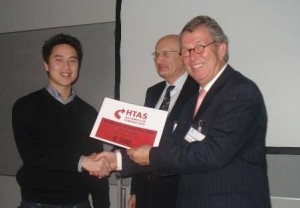Development of a Haptic Feedback Transition Algorithm for Lane Changes Using Neuromusculoskeletal Modeling
Lead: Kakin Tsoi2008-2009 (MSc Project, Completed)
Abstract
In August 2009, Kakin Tsoi graduated cum laude on the MSc thesis “Development of a Haptic Feedback Transition Algorithm for Lane Changes Using Neuromusculoskeletal Modeling”. He subsequently won the Spykerprijs 2009-2010 with his thesis.
Abstract Haptic guidance on the steering wheel has been shown to be useful in supporting drivers during lane keeping and curve negotiation. One successful realization is haptic guidance that continuously produces torques on the steering wheel depending on predicted lateral lane deviations. Thus, both driver and support system contribute to the steering wheel torque, sharing lateral control of the vehicle. However, current shared control systems do not support drivers during a lane change, a driving task diametrically opposed to lane keeping. This study describes the design and evaluation of an extension of lane-keeping haptic guidance, which also continuously and smoothly supports lane changes. An experiment in a fixed-base driving simulator was conducted to assess the effect of the support system on lane change behavior when haptic guidance was provided during both lane-keeping and lane-changing situations. In agreement with previous findings, objective measures and subjective responses showed that the presented haptic guidance was beneficial during lane- keeping tasks, resulting in small but significantly increased performance with a smoother and reduced steering activity.
Although the developed system increased the measured steering wheel peak torque during the start of lane changes, subjective responses showed that drivers could comfortably make lane changes and felt in control during the maneuver. Concluding, the designed system provides drivers with the benefits of (previously designed) haptic guidance for lane- keeping, while allowing them to smoothly change lanes at any time.
Status:
Completed
Associated Research Programme:
Supervisors:
Involved Researchers:
Project Output:
- MSc thesis
- K. K. Tsoi, M. Mulder, and D. A. Abbink, “Balancing Safety and Support: Changing Lanes with a Haptic Lane-keeping Support System,” in IEEE SMC Conference Proceedings, 2010.
